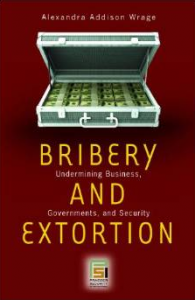
Detailed compliance policies help keep companies on the right side of the law.
But this needs to be balanced with an understanding that no policy can ever contemplate every possible risk. They need to proscribe behavior that is not permitted, while recognizing that few decisions fall on one side or the other of a bright line.
Employees should know more than just “why” compliance is important. They should know who presents risks of improper payments (like government officials), what kinds of requests are inappropriate, where the company faces the most risk, when to involve others in a transaction and how to decline an improper request.
That requires a compliance program that provides practical information that is relevant to employees in an interesting and engaging way. It’s a challenging process, but it can be done.
Here are some strategies to develop a compliance program that does more than simply reiterate the rules:
1) Create cascading compliance
Management tone is crucial to the success of a compliance program, but it is not enough for the C-Suite to tell employees that compliance is important. Top-level executives should communicate with employees about the company’s values, why compliance is important and that the company is prepared to walk away from bribe-tainted deals.
When employees see that the C-Suite is committed to compliance, they are more likely to share that commitment. Institute and enforce mechanisms whereby employees are encouraged to disclose compliance issues.
When employees see that candid communication is valued, they will be more likely to share information.
2) Make it practical and relevant
In addition to bright-line rules and prohibitions, help employees recognize risks, coach them on appropriate ways to respond to improper requests and support them when they avoid potentially improper situations.
This can be done through practical, scenario-based training, with realistic case studies that employees can work through in teams. Encourage employees to discuss why they chose a particular response and why other responses might not be appropriate.
When providing the best response, explain why other responses were less good. Case studies should be relevant to the industry you work in and the locations in question. Employees in pharmaceutical sales in China should not be trained using case studies about freight forwarders in Nigeria.
Everyone relates more easily to information that is relevant to what they are doing and where they work.
Carefully selected examples will also demonstrate that headquarters understands the local challenges they face.
3) Find the weak spots
To ensure training is relevant, visit foreign branch offices and subsidiaries regularly and speak with the employees. Discussions with employees out on the front lines can be a tremendous source of valuable and timely information.
They will know which government officials are demanding bribes, if any, or if other companies are offering bribes. Find out what the challenges are in specific locations. What do employees believe to be “reasonable and customary”?
What techniques have they found useful in the past for circumventing extortionate government officials? Do they believe that an industry-wide initiative might bolster their efforts? What positive suggestions do they have to address the problems they face?
And then tailor your compliance programs to address those specific risks and embrace the best of these suggestions, thereby improving your program and assuring employees that their concerns have been heard.
On a similar note, conduct exit interviews when employees are leaving to provide them with an opportunity to voice any concerns they may have been unwilling to address while still employed.
4) Keep it interesting
Employees will be less engaged in a compliance program based on strict rules.
There are many ways to make a compliance program interesting, engaging and effective.
Periodically send employees short videos on specific topics to re-enforce training or provide practical advice between required training sessions.
Include compliance quizzes in communications. Hold town-hall meetings or lunches to discuss hot topics and trends in compliance, and encourage employees to ask questions. Schedule team-wide exercises that incorporate contests or other activities related to compliance.
These strategies will keep employees interested and engaged and contribute to a stronger sense of community and a better culture of compliance. While a rule based program tells employees what not to do when choices are reasonably clear, prescriptive programs fall short when choices are less clear.
In these situations, employees need to be confident in their ability to apply good judgment based on candid discussion and scenario-based training. They need to know who they can approach with questions. And they need to know that their company will support them on the legitimately close calls.
How do you communicate the grey areas of your compliance program?
Want to read more about avoiding corruption?
Bribery and Extortion: Undermining Business, Governments, and Security by Alexandra Wrage
 Bribery plays a significant role in international criminal activity. Terrorists pay bribes. Money-launderers pay bribes. Those who traffic in people, narcotics, and illegal arms pay bribes. People pay immigration officers not to ask, customs officials not to inspect, and police officers not to investigate. Bribes follow patterns that are not at all mysterious to the officials, salesmen, and citizens who seek them and pay them. Using a series of international cases, Wrage examines bribery, peeling back the mystique and ambiguity and exposing the very simple transactions that lie beneath.
Bribery plays a significant role in international criminal activity. Terrorists pay bribes. Money-launderers pay bribes. Those who traffic in people, narcotics, and illegal arms pay bribes. People pay immigration officers not to ask, customs officials not to inspect, and police officers not to investigate. Bribes follow patterns that are not at all mysterious to the officials, salesmen, and citizens who seek them and pay them. Using a series of international cases, Wrage examines bribery, peeling back the mystique and ambiguity and exposing the very simple transactions that lie beneath.








disqus comments